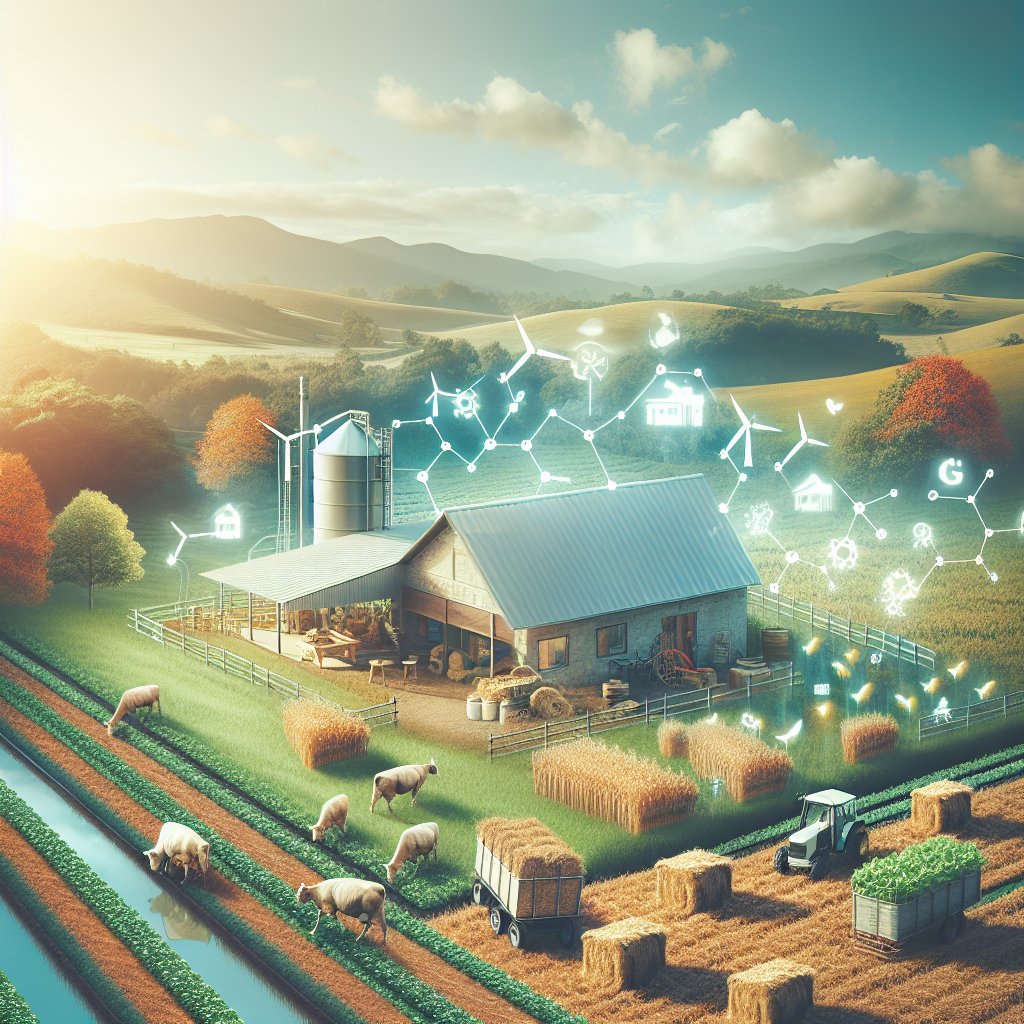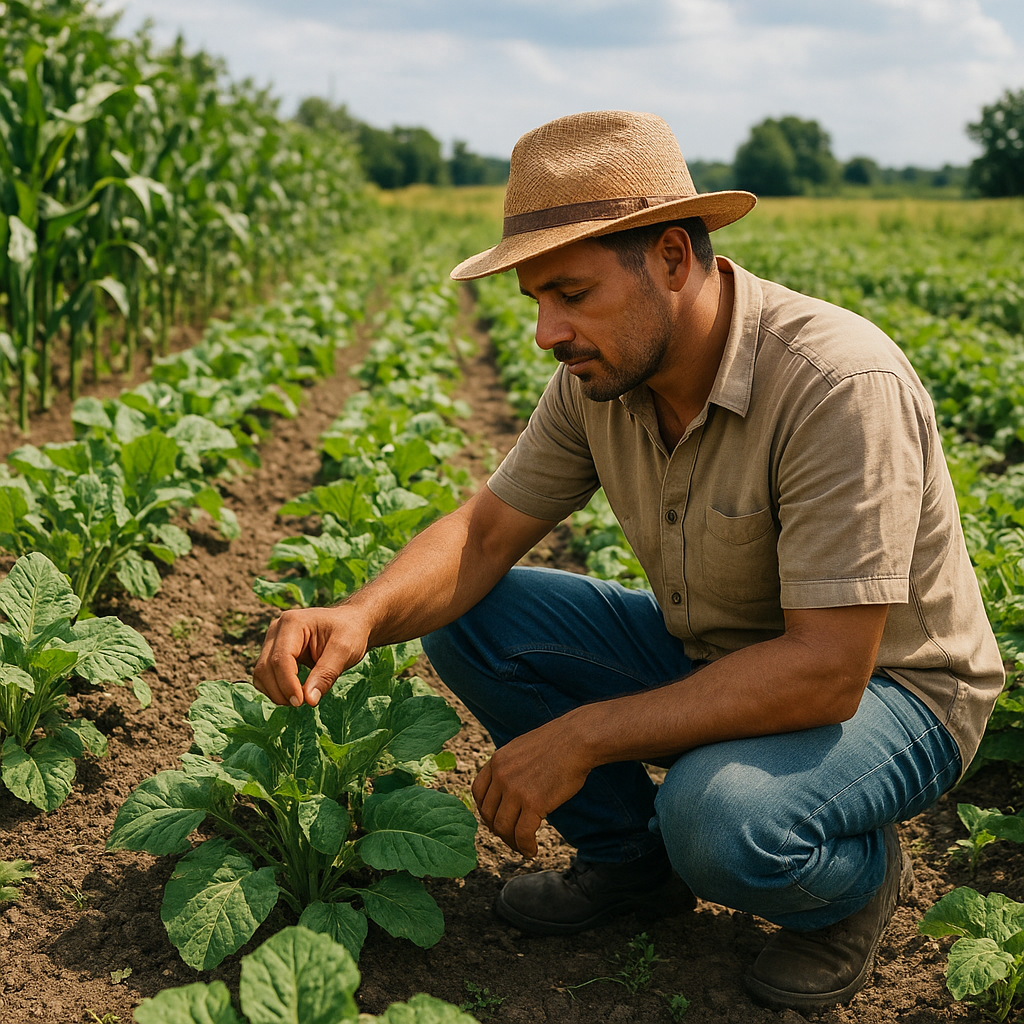
Addressing the challenge of reducing greenhouse gas emissions on farms is crucial for sustainable agriculture and combating climate change. As the agricultural sector is a significant contributor to global emissions, implementing best practices can lead to substantial environmental benefits. This article explores effective strategies that farmers can adopt to minimize their carbon footprint while maintaining productivity and profitability.
Understanding Greenhouse Gas Emissions in Agriculture
Agriculture is responsible for a considerable portion of global greenhouse gas emissions, primarily through methane, nitrous oxide, and carbon dioxide. Methane is predominantly emitted from enteric fermentation in ruminants and manure management, while nitrous oxide arises from soil management practices, including the use of synthetic fertilizers. Carbon dioxide emissions are mainly linked to the use of fossil fuels in farm operations and land-use changes.
Understanding the sources and impacts of these emissions is the first step in developing effective mitigation strategies. By identifying the key areas where emissions occur, farmers can target their efforts more efficiently and implement practices that not only reduce emissions but also enhance farm sustainability.
Methane Emissions
Methane is a potent greenhouse gas with a global warming potential significantly higher than carbon dioxide. In agriculture, it is primarily produced by enteric fermentation in the digestive systems of ruminant animals such as cattle, sheep, and goats. Manure management also contributes to methane emissions, especially when manure is stored or treated in systems that promote anaerobic conditions.
To reduce methane emissions, farmers can adopt several strategies. Improving feed efficiency and diet formulation can significantly decrease enteric fermentation. Incorporating feed additives such as fats, oils, and tannins can also help reduce methane production. Additionally, optimizing manure management practices, such as using anaerobic digesters, can capture methane for energy production, turning a waste product into a valuable resource.
Nitrous Oxide Emissions
Nitrous oxide is another potent greenhouse gas, with a global warming potential much higher than carbon dioxide. It is primarily emitted from agricultural soils following the application of nitrogen-based fertilizers. The challenge lies in balancing the need for crop productivity with the environmental impact of fertilizer use.
Farmers can reduce nitrous oxide emissions by adopting precision agriculture techniques that optimize fertilizer application. This includes using soil testing and crop modeling to apply the right amount of fertilizer at the right time and place. Incorporating cover crops and crop rotations can also enhance soil health and reduce the need for synthetic fertilizers. Additionally, using nitrification inhibitors can slow down the conversion of ammonium to nitrate, reducing nitrous oxide emissions.
Implementing Sustainable Farming Practices
Beyond targeting specific greenhouse gases, adopting broader sustainable farming practices can contribute to emission reductions and improve overall farm resilience. These practices often provide co-benefits, such as enhanced soil health, increased biodiversity, and improved water management.
Agroforestry and Silvopasture
Agroforestry and silvopasture are integrated land-use systems that combine trees with crops or livestock. These practices can sequester carbon, reduce emissions, and provide additional income streams for farmers. Trees act as carbon sinks, capturing carbon dioxide from the atmosphere and storing it in biomass and soil. Additionally, they can improve soil structure, reduce erosion, and enhance biodiversity.
Implementing agroforestry and silvopasture requires careful planning and management to ensure compatibility with existing farm operations. Selecting appropriate tree species, considering their growth patterns, and understanding their interactions with crops or livestock are essential for successful integration.
Conservation Tillage
Conservation tillage is a practice that minimizes soil disturbance, preserving soil structure and organic matter. By reducing the frequency and intensity of tillage, farmers can decrease carbon dioxide emissions from soil and enhance carbon sequestration. Conservation tillage also improves water retention, reduces erosion, and promotes biodiversity.
Transitioning to conservation tillage may require adjustments in equipment and management practices. Farmers should consider the specific needs of their crops and soil types to determine the most suitable tillage approach. Cover crops and crop rotations can complement conservation tillage by providing additional organic matter and nutrients to the soil.
Leveraging Technology and Innovation
Advancements in technology and innovation offer new opportunities for reducing greenhouse gas emissions on farms. From precision agriculture tools to renewable energy systems, these technologies can enhance efficiency and sustainability in agricultural operations.
Precision Agriculture
Precision agriculture involves using technology to monitor and manage farm inputs with high accuracy. By utilizing GPS, sensors, and data analytics, farmers can optimize the use of water, fertilizers, and pesticides, reducing waste and emissions. Precision agriculture also enables better decision-making, leading to improved crop yields and resource efficiency.
Implementing precision agriculture requires investment in technology and training. However, the long-term benefits, including cost savings and environmental improvements, often outweigh the initial costs. Farmers should assess their specific needs and capabilities to determine the most appropriate precision agriculture tools for their operations.
Renewable Energy
Integrating renewable energy systems, such as solar panels and wind turbines, can significantly reduce carbon dioxide emissions from farm operations. These systems provide clean energy for powering machinery, irrigation systems, and other farm activities, reducing reliance on fossil fuels.
Adopting renewable energy requires careful planning and consideration of factors such as location, energy needs, and available resources. Farmers can explore government incentives and programs that support the transition to renewable energy, making it a more accessible and viable option.
Conclusion
Reducing greenhouse gas emissions on farms is a critical component of sustainable agriculture and climate change mitigation. By understanding the sources of emissions and implementing best practices, farmers can contribute to a healthier environment while maintaining productivity and profitability. From improving feed efficiency and optimizing fertilizer use to adopting sustainable farming practices and leveraging technology, there are numerous strategies available to reduce emissions and enhance farm sustainability. As the agricultural sector continues to evolve, embracing these practices will be essential for building a resilient and sustainable future.

